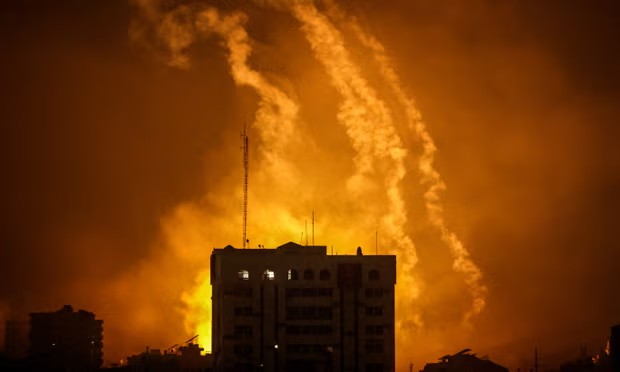Israel’s ongoing war in Gaza is producing a carbon footprint that surpasses the annual emissions of more than 100 countries, according to recent climate impact assessments. As the death toll and destruction mount, the environmental cost of the conflict is emerging as a profound and underreported dimension of modern warfare.
Over a 15-month period since the war’s escalation, the estimated greenhouse gas emissions tied directly to Israeli military operations and the broader devastation in Gaza total nearly 1.9 million tonnes of carbon dioxide equivalent. The vast majority—around 99 percent—of those emissions stem from the Israeli Defence Forces’ intensive aerial bombardments, fuel consumption from tanks and armoured vehicles, and logistics supporting sustained military operations. By contrast, emissions linked to Hamas are calculated at a mere 3,000 tonnes, or 0.2 percent of the total.
The scale of destruction in Gaza—among the most extensive since World War II—is fuelling a secondary environmental crisis. With over half of all buildings in the territory damaged or destroyed, the rubble generated is estimated at more than 42 million tonnes. Clearing and processing this debris, and ultimately rebuilding the urban infrastructure, is expected to generate an additional 31 million tonnes of emissions—roughly equivalent to the annual carbon footprint of nations such as New Zealand or Afghanistan.
The implications are both immediate and long-term. In the short term, the destruction of Gaza’s power infrastructure, including solar arrays and clean energy sources, has led to increased reliance on diesel generators, further driving emissions. The humanitarian fallout is also exacerbated by this environmental collapse, with displaced populations facing heightened exposure to pollution, contaminated water, and disrupted access to basic services.
Reconstruction, already projected to take decades and cost upwards of $80 billion, will involve large-scale imports of cement, steel, and heavy machinery—all carbon-intensive sectors. Without significant international intervention and the application of green rebuilding principles, Gaza risks becoming not only a site of prolonged conflict but also a long-term emitter in the global climate crisis.
The environmental cost of war is rarely measured alongside its human toll, yet the Gaza conflict makes clear that modern warfare contributes meaningfully to the climate emergency. As states and institutions push for climate accountability, the emissions generated by military activity remain largely exempt from scrutiny and regulation.
In Gaza, the carbon footprint is not an abstract figure—it is embedded in the ruined buildings, in the diesel-choked air, and in the future cost of rebuilding a society from the ground up. The war’s legacy will be measured not only in lives lost and homes destroyed but in decades of emissions that will linger long after the last bomb falls.
newshub finance



Recent Comments